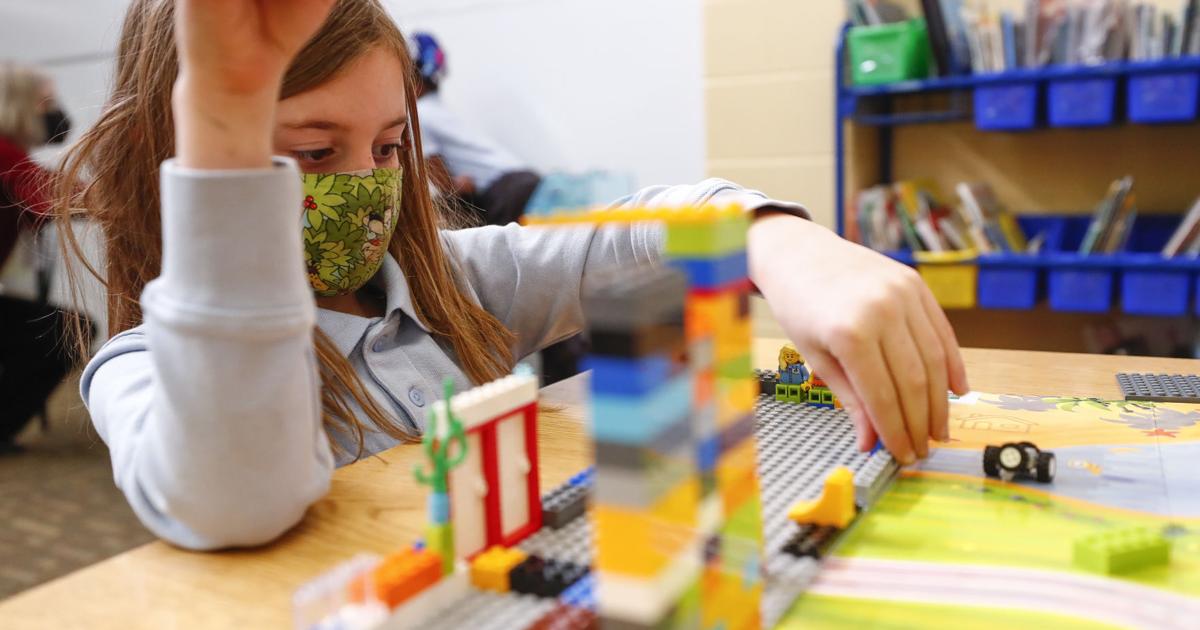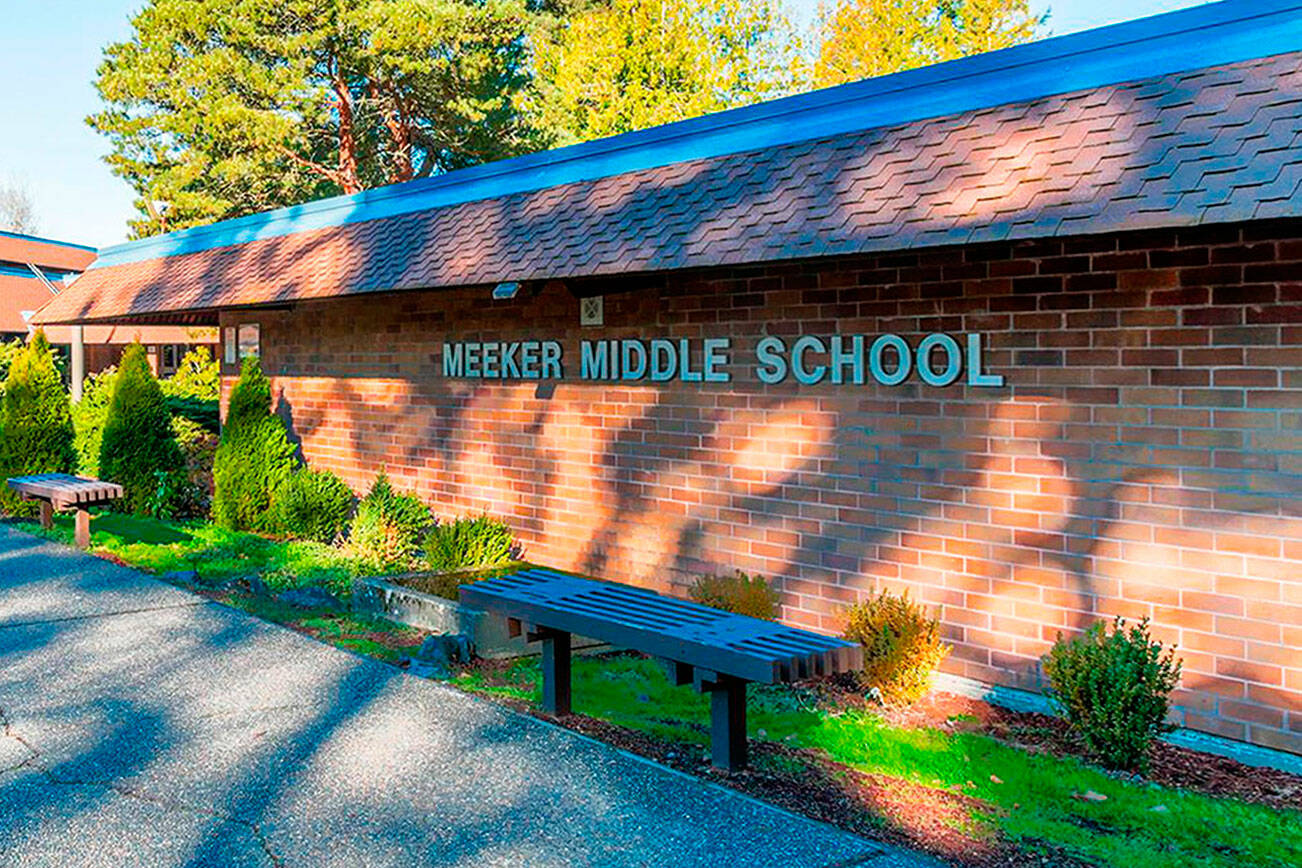WATERLOO — Second-graders at Highland Elementary School were introduced to FIRST Lego League Explore in class during December, just before the holiday break.
The colorful plastic bricks are well known to young children. But adding battery-powered components like a Lego motor and learning computer coding to make them work are a different matter.
“The first day we were trying to build this, we didn’t know what to do,” Edvin Revolorio said Friday as he and three classmates demonstrated their creations during an expo at the school. “We just got our Lego pieces and started playing.”
Teams of three to four students were designing elements based on the current Lego League theme of Cargo Connect, including a sorting center and truck. They could also build trains, boats, airplanes and more to help transport cargo. All of it is placed on a mat with a spot for the sorting center along with roads, train tracks and a river.
Revolorio and his classmates Jyonna Taylor, Vung Len and Elvionna Ellis said they kept trying different ideas and began to figure out what to do as a team. Learning to work as a team is one aim of For Inspiration and Recognition of Science and Technology, or FIRST, the organization that developed Lego League. As for the coding, their teacher provided instruction on the basics.
People are also reading…
“It turned out to be pretty easy and it was really fun to code,” said Revolorio.
Highland’s second grade was the district’s pilot for bringing FIRST Lego League Explore into the classroom during the school day. The program, which was previously known as Lego League Junior, is for children ages 6 to 10. It is being used as a way to introduce science, technology, engineering and mathematics – or STEM – concepts to students.
“Typically, with Lego League, there’s after-school teams that form,” said Erin Sale, Waterloo Community Schools’ STEM coach. That has meant only a small number of students have been able to participate in the past.
The district is bringing the program to all of its second- through fourth-grade classrooms this year, more than 2,300 students. This is being done with the help of a scale-up grant from the Governor’s STEM Advisory Council and funding provided by John Deere.
“All these kids are going through their own design process,” noted Sale. “The coding and building is really great. … With this, the teacher is facilitator rather than holder of the knowledge.”
On Friday, she joined teachers at the Highland expo reviewing the 17 student teams’ Lego models and the process used to create them, reflected on posters each group displayed. Awards were to be given for accomplishments in areas like coding, teamwork and design.
Armonte McCoy, who was part of the team Best Kid Creators, said he didn’t know at first why a computer would be needed with Legos. But at the expo, he explained how the students used it to program their Lego Technic Small Hub.
Some people are so good at deception that you feel it’s impossible to distinguish between what is false and what is true
The rectangular device was built into the sorting center and powered the motors, lights, and color sensors students worked with. It is Bluetooth-enabled and contains two input and output ports plus a rechargeable battery.
The sorting center includes a chute that Lego boxes can be dropped into. Concerning the cargo in the boxes, McCoy said, “these are like chicken nuggets, shoes, velcro” – different products that could be sorted for transport to stores or people’s homes.
Before dropping the boxes in the chute, “we press the play button and it starts moving,” he said of a motorized arm that can send them in different directions. “Then we get the boxes and put them in here in the truck and transport them to the houses.”
He and his teammates, Terr’kyah Williams and Gabby Peyton, said they learned in class about cargo shipping and companies in Waterloo – John Deere, Tyson Fresh Meats and several cabinet makers – whose products are transported to other places.
Maddie Boesen, a Highland second-grade teacher, said students did a lot of problem-solving and built social skills during the Lego League project. They also learned about making presentations through the process.
“It’s fun for us as teachers,” she said, to see that growth. “For being the pilot, I think it went great.”
Third-grade classes at Highland will now go through the program, followed by the fourth grade, Sale said. All other Waterloo Schools’ elementary buildings will be starting Lego League Explore in their classrooms, as well.
Photos: Waterloo West girls and boys host Waterloo East, Jan. 28
BGBBall West vs. East 4

Waterloo West junior Keishaun Pendleton makes gets the reverse layup against Waterloo East on Friday at West.
BGBBall West vs. East 2

Waterloo West senior Brooklynn Smith reaches for the rebound against Waterloo East on Friday at West.
BGBBall West vs. East 7

Waterloo West senior Alen Dizdaric stretches to get the rebound over the head of Waterloo East junior Kewone Jones on Friday at West.
BGBBall West vs. East 3

Waterloo West junior Sahara Williams takes the jump shot against Waterloo East on Friday at West.
BGBBall West vs. East 6

Waterloo East junior Jameel Montgomery drives to the basket for a fast break dunk against Waterloo West on Friday at West.
BGBBall West vs. East 1

Waterloo West junior Halli Poock dribbles down court against Waterloo East on Friday at West.
BGBBall West vs. East 5

Waterloo West junior Si’Marion Anderson drives towards the baseline against Waterloo East on Friday at West.
BGBBall West vs. East 8

Waterloo East junior Jameel Montgomery takes a shot from under the basket against Waterloo West on Friday at West.





